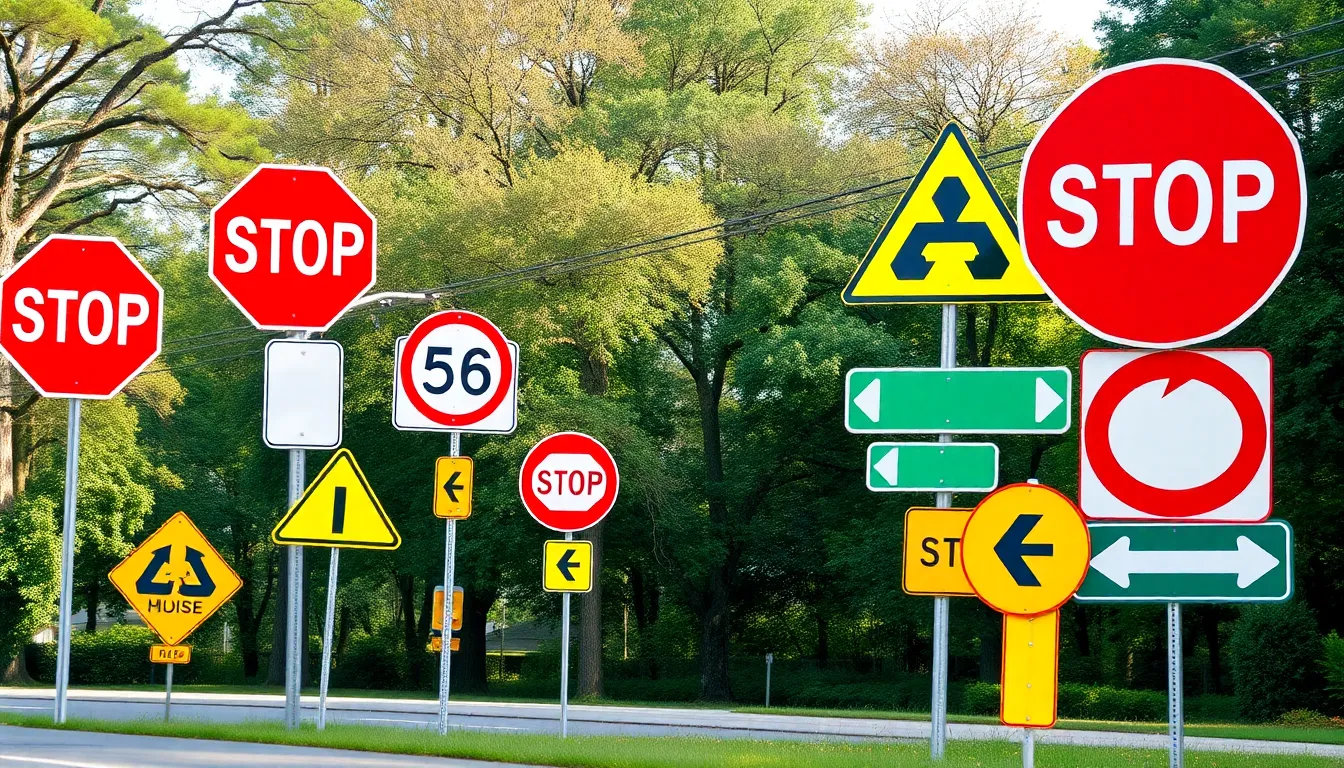When cruising down the road, most drivers don’t give much thought to the colorful array of signs guiding their journey. But what if we told you that the color of regulatory signs isn’t just a random choice? It’s a carefully crafted system designed to keep everyone safe and sound. Imagine a world where stop signs were neon pink or yield signs were plaid—chaos would reign supreme!
Table of Contents
ToggleUnderstanding Regulatory Signs
Regulatory signs play a vital role in guiding road users. These signs inform drivers about rules, regulations, and expected behaviors on the road.
Definition of Regulatory Signs
Regulatory signs are essential traffic control devices. They convey mandatory instructions for all road users. Examples include stop signs, yield signs, and speed limit signs. Understanding these signs ensures compliance with traffic laws. Each sign’s color and shape communicate its meaning.
Importance of Regulatory Signs
Importance lies in safety and order on roadways. Regulatory signs prevent accidents by providing clear instructions. Consistency in color helps minimize confusion among drivers. Recognizing these signs ensures proper navigation through intersections and highways. Following these directives promotes a smoother traffic flow and reduces the risk of collisions.
Color of Regulatory Signs

Regulatory signs feature specific colors that communicate crucial messages to road users. Understanding these colors enhances safety and ensures compliance with traffic regulations.
Standard Colors Used
Red indicates prohibitive actions, commonly seen in stop and yield signs. White represents rules or mandatory actions, frequently appearing in speed limit signs. Black, often combined with white, highlights information. Green conveys guidance, generally found in directional signs. Yellow serves as a warning, indicating caution and drawing attention to potential hazards. Blue promotes service signs, offering information about amenities. Orange is used for construction and temporary situations, alerting drivers to changes in road conditions.
Exceptions and Variations
Some regulatory signs may have variations. For example, international signage can differ in color schemes based on local regulations. Certain jurisdictions may adopt unique colors to comply with their specific traffic laws. Specialty signs also exist to address specific situations, such as school zones, where fluorescent yellow-green is used to increase visibility. In cases where colors differ from established norms, local guidelines or statutes take precedence to ensure adherence to safety standards.
Psychological Impact of Color in Traffic Signs
Colors in traffic signs significantly affect driver perception and behavior. Understanding how colors influence recognition and emotions aids in designing effective regulatory signs.
Color Recognition at a Distance
Color recognition plays a crucial role in traffic safety. Red, for example, stands out against many backgrounds, making stop and yield signs easily identifiable. Bright colors like yellow and orange capture attention, especially in warning signs. These vibrant hues enhance visibility from a distance and draw immediate focus to critical information. Studies indicate that high contrast between the color of the sign and the background increases reaction times. Clear recognition at a glance reduces the likelihood of accidents, contributing to safer roadways.
Emotional Associations with Colors
Colors evoke various emotional responses, impacting driver behavior. Red often symbolizes urgency and danger, prompting quick reactions. Drivers typically associate blue with trust, which is why service signs, such as those indicating rest areas, use this color. Green conveys a sense of safety and direction, guiding drivers towards their destinations. Yellow is attention-grabbing and indicates caution in potentially hazardous situations. Each color’s psychological effect, therefore, shapes driver decisions, illustrating why consistent color use across regulatory signs is vital for maintaining order on roadways.
Understanding the colors of regulatory signs is vital for safe navigation on the roads. Each color serves a specific purpose and conveys important information to drivers and pedestrians alike. The consistency in colors not only aids in quick recognition but also enhances overall road safety.
By adhering to established color standards, road users can respond appropriately to various traffic situations. This uniformity minimizes confusion and promotes a safer driving environment. As traffic systems evolve, maintaining these color conventions will remain essential for effective communication and safety on the roadways.

